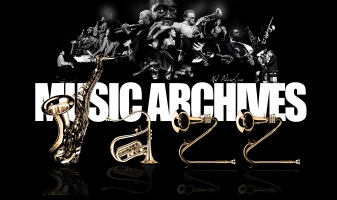
 |
Ballet Experiment With Jazz |
Post Reply 
|
| Author | |
snobb 
Forum Admin Group 

Site Admin Joined: 22 Dec 2010 Location: Vilnius Status: Offline Points: 28449 |
 Post Options Post Options
 Thanks(0) Thanks(0)
 Quote Quote  Reply Reply
 Topic: Ballet Experiment With Jazz Topic: Ballet Experiment With JazzPosted: 04 Nov 2015 at 11:07am |
 A few weeks ago, the ballerina Michele Wiles wrinkled her nose in concern and confusion. Her company, BalletNext, was having its first rehearsal with the Tom Harrell Quintet, and the musicians were playing something a little different from the recording that the dancers had been practicing to for weeks. This was throwing off the dancers. After some halting conversation, the problem was fixed, but the dancers were going to have to get used to the music’s being a little different every time. The Tom Harrell Quintet plays jazz, and improvisation is built in. This week at New York Live Arts, the quintet is joining BalletNext in the premiere of Ms. Wiles’s “Apogee in 3.” Live jazz is a new step for her, one that comes with risks of unpredictability and the potential for idiomatic mismatches. She’s not the only choreographer taking those risks this month. Kyle Abraham, who used live jazz musicians for the first time last year (the year after he won a MacArthur grant), was so thrilled by the experience that he’s having jazz musicians accompany all three works that his company, Abraham.In.Motion, is presenting at the Joyce Theater from Tuesday through Nov. 15.  Jazz musicians regularly play for tap dancers, but they’re uncommon in the world of modern dance and even rarer in ballet, partly because of a fear that musical improvisation might interfere with complex choreography. The rarity is much of the appeal for Ms. Wiles, who has been on the hunt for new experiences since she left American Ballet Theater in 2011. Friends introducing her to jazz urged her to catch Mr. Harrell at the Village Vanguard. She loved what she heard, and asked him if he might be interested in working with a ballet troupe. He was. No choreographer had ever asked him in his five-decade career as an acclaimed trumpeter and composer. Mr. Harrell was even less acquainted with contemporary ballet than Ms. Wiles was with jazz, but they found some common ground. “Baroque Steps,” a composition she picked for “Apogee in 3,” exploits the harmonic and structural similarities between jazz and Baroque music, a style much more familiar to her. Which isn’t to say that she is avoiding risk. During a photo shoot for the project, Mr. Harrell was improvising on his trumpet, and Ms. Wiles began improvising in her point shoes. She decided to put an impromptu interaction between them into “Apogee in 3.” “The dance needs improvisation,” she said, “because that’s jazz.” Otherwise, the all-female “Apogee” ensemble moves largely in parallel to Mr. Harrell’s music, doing set choreography, much of it created to other music (a practice not unusual in dance). “On any given night,” Ms. Wiles said, “the musicians’ solos might be different, but we know what we’re doing.” The musicians could almost be playing anything, but their playing live, Ms. Wiles said, makes a big difference in support and energy. “There’s a freedom but also a structure,” she added. “It’s fun and serious at the same time.”  Mr. Abraham, rehearsing recently with the jazz pianist Kris Bowers and the drummer Otis Brown III, seemed to have no trouble finding a common language. That is partly because Mr. Abraham is a longtime jazz fan. That’s what led him to hire the Robert Glasper Trio last year to play for his dance “The Gettin’,” adapting music from Max Roach’s 1960 album, “We Insist! Freedom Now Suite.” “The Gettin’ ” is on the Joyce program (with Mr. Bowers on piano this time). So is “The Quiet Dance,” an accurately titled 2011 work originally performed to a Bill Evans recording of “Some Other Time.” At the Joyce, Mr. Bowers will play from a transcription of the recording, treating even Evans’s improvisational passages almost like a classical composition. “But I’m not Bill Evans,” Mr. Bowers said, “so I’m not going to play exactly like him. It depends on how I feel in the moment. There are cues that are important to the dancers, but I’m finding where I can take my liberties.” In rehearsal, Mr. Abraham acknowledged the conflict between spontaneous interactions and the dancers’ need for consistent tempos and prompts. He worked with the musicians on clear musical transitions. The language they shared was not only jazz, though. All three men grew up with hip-hop; much of the music for “Absent Matter,” the premiere on the Joyce program, is an arrangement of hip-hop samples. Mr. Abraham usually begins his choreographic process with a playlist of songs. The one for “Absent Matter” included Tupac Shakur, Biggie Smalls, Kanye West and Kendrick Lamar. As anyone familiar with that list might guess, death was on his mind, and also frustration, anger and the Black Lives Matter movement. Mr. Bowers and Mr. Brown had the assignment of making that playlist and its themes their own. They use samples from those and other recordings, but they set them off live, with Mr. Bowers’s laptop and Mr. Brown’s electronic drum kit. They also play other music with, and around, and on top of the samples, different music every time in response to the dancers. It’s a balance between the preset and the in the moment, between prerecorded and live. But Mr. Abraham also views his Joyce program as a kind of progression — from the live jazz trio for “The Gettin’ ”; to the transcription for “The Quiet Dance”; to “Absent Matter,” which mixes live music with samples and ends with a full recorded track: Mr. Lamar’s “Alright,” a song that has been adopted by crowds protesting police harassment. “It almost could be about the death of live music,” Mr. Abraham said. from www.nytimes.com |
|
 |
|
Post Reply 
|
|
|
Tweet
|
| Forum Jump | Forum Permissions  You cannot post new topics in this forum You cannot reply to topics in this forum You cannot delete your posts in this forum You cannot edit your posts in this forum You cannot create polls in this forum You cannot vote in polls in this forum |